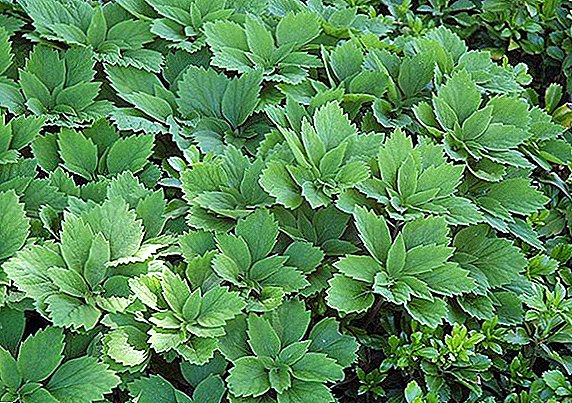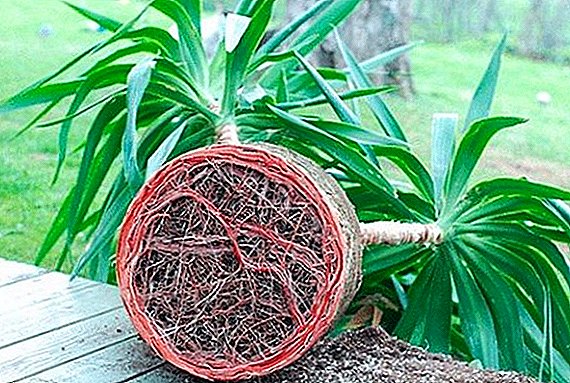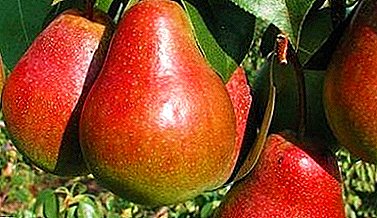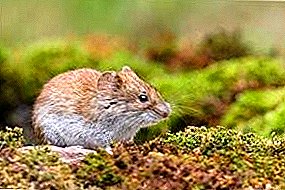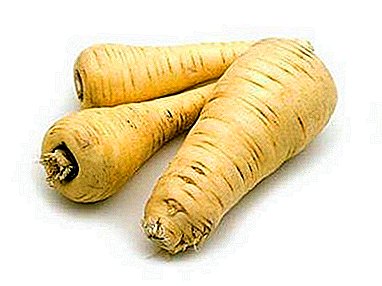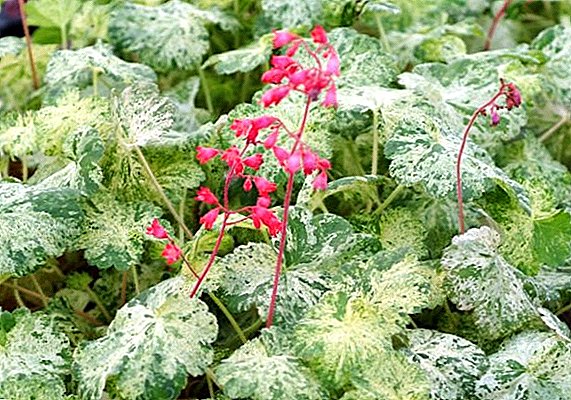 Geicher is one of the most unusual and beautiful plants, which was first discovered in the mountains of North America. In a short period of time the bush won the hearts of many gardeners. The main advantage of the bush - simplicity. The flower has gained incredible popularity due to the huge variety of fabulous shades of inflorescences and leaves.
Geicher is one of the most unusual and beautiful plants, which was first discovered in the mountains of North America. In a short period of time the bush won the hearts of many gardeners. The main advantage of the bush - simplicity. The flower has gained incredible popularity due to the huge variety of fabulous shades of inflorescences and leaves.
Gender description
Geicher belongs to the genus of perennial herbaceous plants belonging to the family of Kamenelomkovy.
Did you know? During one growing season, geyher leaves can change their coloring several times.The flower owes its name to a German physician and botanist Johann Heinrich von Geicher.
Geicher has a good resistance to cold. The formation of a compact bush contribute basal dense toothed leaves on long petioles. The plant is represented by a huge variety of shapes and colors of leaves, which depict all sorts of patterns, dots and streaks.  In the vegetative period, a large number of flower stalks appear on the plant. They are located above the leaves and close the beautiful decorative composition. Flowers have small sizes and unsightly look. By color can be white, red, pink.
In the vegetative period, a large number of flower stalks appear on the plant. They are located above the leaves and close the beautiful decorative composition. Flowers have small sizes and unsightly look. By color can be white, red, pink.
Popular varieties: color classification
Geykher varieties differ in different bright colors of leaves, the catalog includes about 70 species of this beautiful plant. Consider what varieties of colors most often found in nature, and give a brief description.
Red
The second name of this species is "coral bell". This plant belongs to perennial shrubs, whose height reaches up to 60 cm and width up to 30 cm.
Important! Dark-leaved varieties are recommended to be planted in shady places. Choose for planting moist nutrient soil.The growth of leaves begins directly from the bush on long stems. Over time, they become round and reach about 8 cm in diameter. Have a dark green color with a pronounced marble pattern. The inflorescence is represented by small bright red flowers, its size is about 15 cm. On the flowering stems are several leaves.
 Among the most common varieties of red-leaf geyher are the following:
Among the most common varieties of red-leaf geyher are the following:- Geicher's "Purple Castle". The species is obliged by its name to large purple leaves.

- Geicher "Cherry Cola". A beautiful flower with red-brown foliage and lush pink inflorescences.

Silvery
One of the representatives of the plant is a silver color grade "glitter". The flower has a compact size - up to 25 cm in height. Originality leaves gives an unusual silver color, which stand out black streaks. During flowering (and he usually falls in June-September), small pink inflorescences appear on the bush.
Did you know? Peduncles cut from a flowerbed, will stand a vase with water for three weeks."Glitter" grows well on fertile soils with high humidity. The ground should be loose and drained. The flower behaves well in the shade and in the sun. You should not worry that in frost the plant will die - it has a high frost resistance.
Also the most popular among silver-leafed geyher gained such varieties:
- "Mint Frost". American hybrid with green foliage and light streaks.

- "Stormy Seas". The bush of this variety has a very beautiful shape and resembles a storm sea in its appearance. The leaves are painted in an unusual lilac-purple color and covered with silver patina.
 Often silver geyhery used to create unusual compositions in flower beds, in rock gardens and rocky gardens.
Often silver geyhery used to create unusual compositions in flower beds, in rock gardens and rocky gardens.Good neighbors in the garden for geyhery are iris, host, primrose, astilba.
With yellow leaves
Yellow-leaved varieties are sunny and at the same time "autumn bushes", posing as a bright color. The following types are popular among them:
- Geicher "Marmalade". The shrub has a yellow-orange foliage, the inside of which is colored red. This variety is called fun and positive.

- "Lime Pie". Thanks to lemon coloring, from such a bush always blows freshness. Planted in a shadow flower garden, this variety will acquire a special look.

- "Citronelle". The shrub has large yellowish leaves, looks good among the rich bright green.

Green
One of the brightest representatives of green shrubs is geykhera "Sasha". It looks like a small bush, whose height is about 20 cm. The leaves are painted olive-green, have a shiny top and a contrasting purple lining. The plant looks very elegant, like lace.
Important! Stagnant water under a bush can lead to its death, so for the normal growth of the flower it will be enough to water it once a week.
 The inflorescences of the plant are painted white. The flowering period begins in July and lasts until September. Geicher with green leaves is recommended to be planted in slightly acidic or neutral soil, suitable for planting both sunny and shady terrain.
The inflorescences of the plant are painted white. The flowering period begins in July and lasts until September. Geicher with green leaves is recommended to be planted in slightly acidic or neutral soil, suitable for planting both sunny and shady terrain.For shady and half-shaded garden area, such perennial plants are well suited: aconite, beranne, periwinkle, brunner, bathhouse, bathing vessel, bathing, silverweed, daylily, lupine, host.
Spotty
These varieties are distinguished by their original spotted color. Such flowers are visible from afar. Among their varieties are very popular following:
- "Midnight Rose". On the leaves of the shrub stand out pink blotches, located on a purple background. Such an ensemble of colors gives the plant a beautiful look.

- "Color Dream". The shrub is represented by unusual leaves decorated with purple-silver-green spots.

- "Hercules". This variety is well adapted to growth in sunny areas, has succulent leaves, which are coated with marble-white "spray".

Basic rules for growing
Geicher does not apply to plants that require careful and constant care. To grow a beautiful flower, You must follow simple rules:
- It is necessary to spud bushes. This is due to the fact that often the rhizome protrudes from the surface of the earth, if left uncovered, it begins to dry quickly.
- You should not worry how the plant will transfer the winter period. It is resistant to frost, in the end of the autumn you should not cut it.
- With the arrival of spring, it is necessary to remove dead leaves.
- In the fall and spring, plants are fertilized on an obligatory basis — you need to cover the base of the bush with a small layer of peat and humus.
- About once every four years it is necessary to carry out shrubs seating. If this is not done, the center of the plant will become bare and he will not be able to bear the winter cold.



